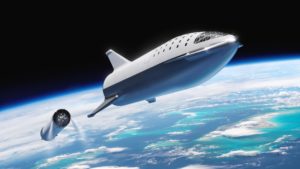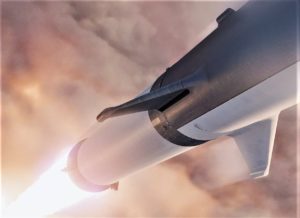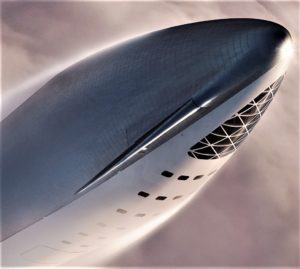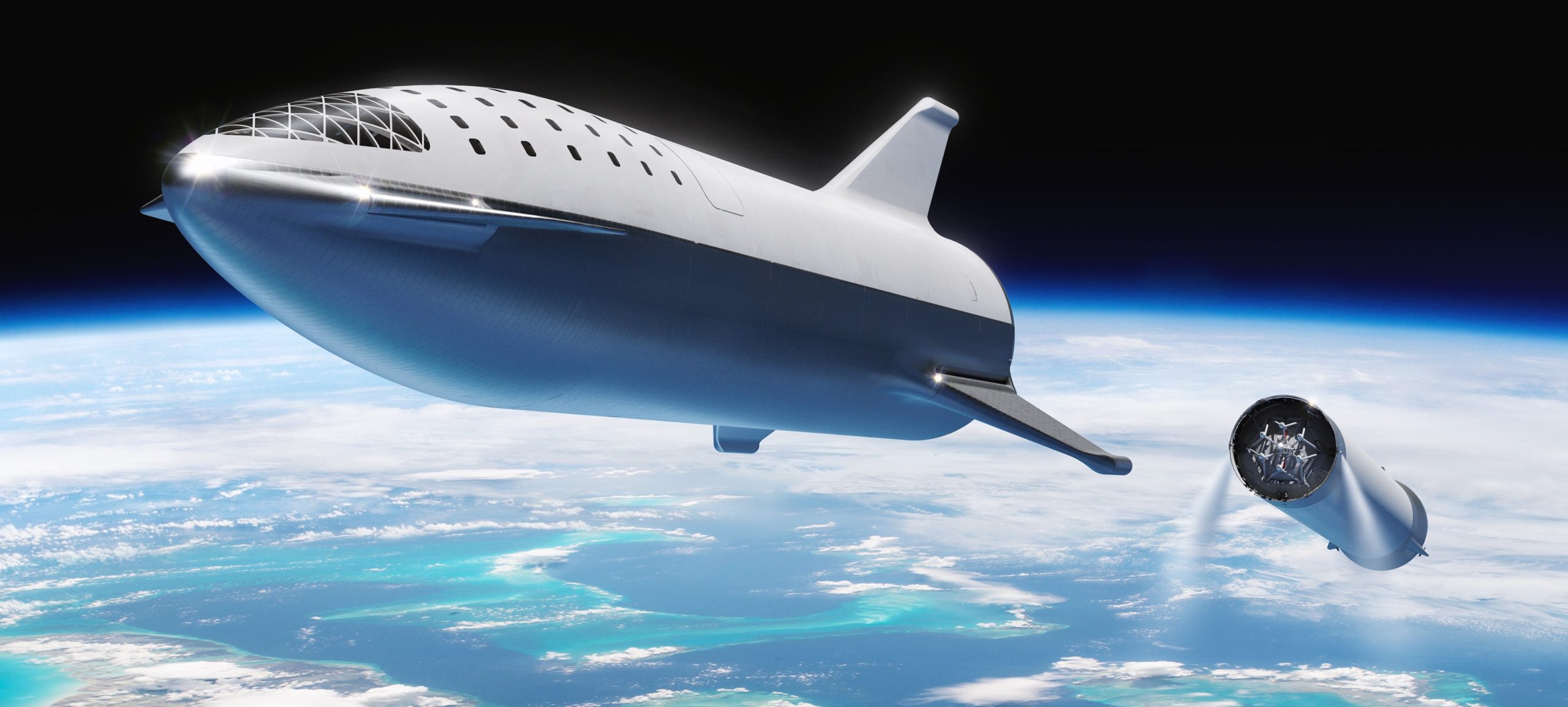
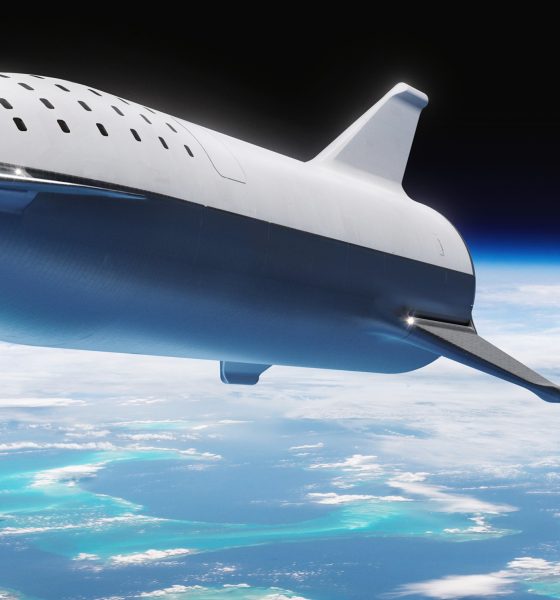
SpaceX
SpaceX to build small version of BFR’s spaceship for use on Falcon 9, says Elon Musk
SpaceX CEO Elon Musk has taken to Twitter to announce a new development program: in order to gain experience with the new design and recovery strategy, SpaceX engineers and technicians will apparently build a miniature version of BFR’s winged spaceship able to launch atop Falcon 9 or Falcon Heavy.
According to Musk, the company aims to conduct the first orbital flight of this mini-BFS as early as June 2019, just eight months away.
Mod to SpaceX tech tree build: Falcon 9 second stage will be upgraded to be like a mini-BFR Ship
— Elon Musk (@elonmusk) November 7, 2018
Described as a “SpaceX tech tree build”, Musk seems to be implying that the strategic purpose of this new development is to act as a stepping stone between Falcon 9 and BFR, two dramatically different launch vehicles relying on a variety of entirely distinct technologies. Based on the fact that Musk believes the mini-BFS could reach orbit as early as June 2019, it seems likely that the miniature spaceship will essentially just be a strengthened Falcon 9 upper stage with fins and a heat shield attached versus a more extreme departure, where the stage would literally be a mini-BFS.
In the latter scenario, SpaceX could use the opportunity to extensively test – albeit on a smaller scale – a number of immature BFR technologies, including all-composite propellant tanks, autogenous pressurization, a sea level-optimized rocket engine on an orbital upper stage, methane and oxygen (methalox) propellant, actuatable tripod fins, new heat shield materials, and more. If SpaceX has been working on this for several months, there is still a chance that those technologies will be tested on this step-change Falcon 9 S2 variant, but it seems improbable that Musk would have been able to stay totally silent on the plans during his September 2018 update to the BFR program.
- BFR’s spaceship and booster (now Starship and Super Heavy) separate in a mid-2018 render of the vehicle. (SpaceX)
- A detailed view of BFR’s booster interstage, apparent lack of grid fins, RCS pod nubs, and more. (SpaceX)
- A closeup of BFS’ nose section, featuring impressively varied tile-sizes, joining methods, and extremely precise curves on the interface between canard wings and the hull. (SpaceX)
Falcon 9 upper-stage recovery
Going off of what little information we have, it seems more likely that the “mini-BFR ship” described by Musk is an effort to realize Falcon 9 upper stage recovery and test BFR’s orbital spaceship recovery strategies than it is an extensive development platform for all critical BFR technologies. Prior to today’s tweet, Musk announced early this year (April, to be precise) that SpaceX would attempt to recovery Falcon 9’s upper stage with a “giant…balloon”, or an inflatable decelerator to use the technical terminology.
SpaceX will try to bring rocket upper stage back from orbital velocity using a giant party balloon
— Elon Musk (@elonmusk) April 15, 2018
Given this new development, it’s unclear if those plans are still on – as a small spaceship, Falcon 9’s upper stage would likely be able to reenter Earth’s atmosphere without the need for something like a single-use inflatable decelerator, which would have always been a suboptimal crutch for the recovery of any orbital spacecraft, be it Falcon 9 or BFR. With this new plan, it appears that SpaceX wants to kill at least two birds with one stone, building a platform capable of flight-testing a handful of new technologies critical to BFR’s success while also potentially realizing the dream of a fully-reusable Falcon 9.
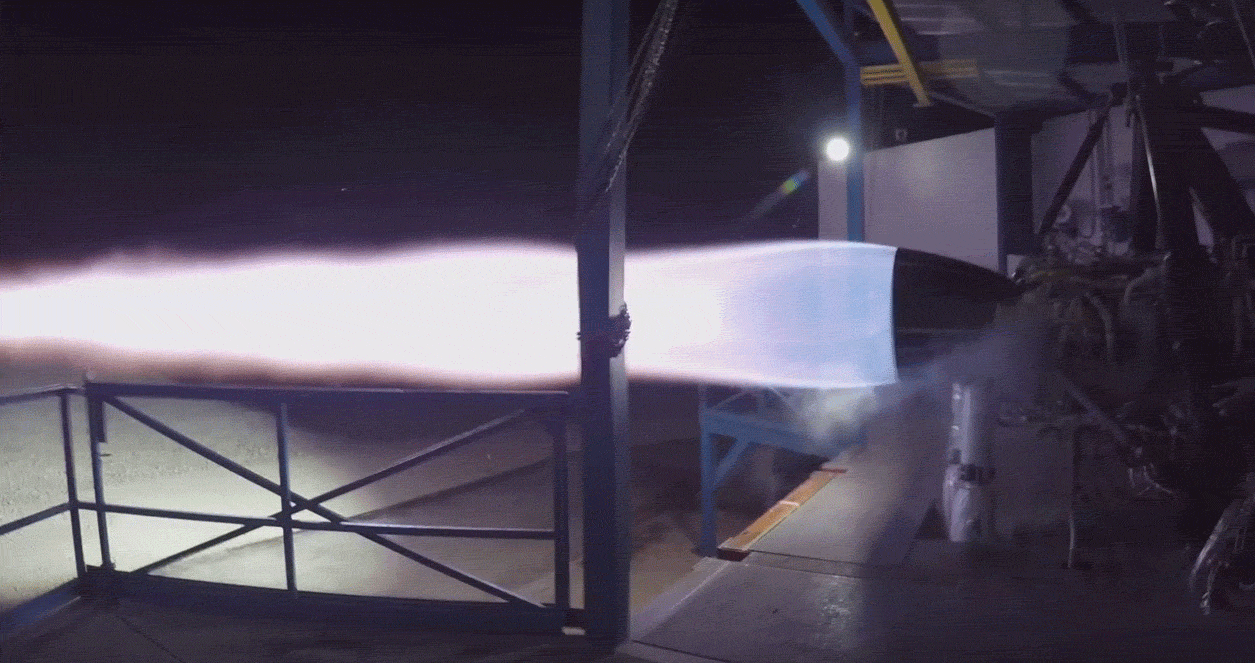
Given recent reports from Reuters that Musk has demanded that SpaceX’s Starlink team work towards the first launch of an operational batch of satellites by mid-2019, his target date for a mini-BFS Falcon 9 upper stage is likely no coincidence. Given the potential risk of being the first to launch on an unproven variant of Falcon 9, it’s possible (if not probable) that SpaceX will conduct its own launch of the rocket prior to flying paying customers – a perfect way to avoid wasting that launch would be risking a few of SpaceX’s own Starlink satellites in place of a customer’s payload.
Won’t land propulsively for those reasons. Ultra light heat shield & high Mach control surfaces are what we can’t test well without orbital entry. I think we have a handle on propulsive landings.
— Elon Musk (@elonmusk) November 7, 2018
Musk seems to be confident that SpaceX has effectively ‘solved’ propulsive rocket landings, stating that the purpose of this new variant will be dedicated to testing an “ultra light heat shield and high Mach control surfaces”. Judging from a number of recent job postings focused on new thermal protection systems (and affixing them to composite structures) and an official request for information (RFI) from NASA Ames about its lightweight TUFROC heat shield material, this is a major focus and one of several critical paths for BFR development.
For prompt updates, on-the-ground perspectives, and unique glimpses of SpaceX’s rocket recovery fleet check out our brand new LaunchPad and LandingZone newsletters!

News
SpaceX shades airline for seeking contract with Amazon’s Starlink rival

SpaceX employees, including its CEO Elon Musk, shaded American Airlines on social media this past weekend due to the company’s reported talks with Amazon’s Starlink rival, Leo.
Starlink has been adopted by several airlines, including United Airlines, Qatar Airways, Hawaiian Airlines, WestJet, Air France, airBaltic, and others. It has gained notoriety as an extremely solid, dependable, and reliable option for airline travel, as traditional options frequently cause users to lose connection to the internet.
Many airlines have made the switch, while others continue to mull the options available to them. American Airlines is one of them.
A report from Bloomberg indicates the airline is thinking of going with a Starlink rival owned by Amazon, called Leo. It was previously referred to as Project Kuiper.
American CEO Robert Isom said (via Bloomberg):
“While there’s Starlink, there are other low-Earth-orbit satellite opportunities that we can look at. We’re making sure that American is going to have what our customers need.”
Isom also said American has been in touch with Amazon about installing Leo on its aircraft, but he would not reveal the status of any discussions with the company.
The report caught the attention of Michael Nicolls, the Vice President of Starlink Engineering at SpaceX, who said:
“Only fly on airlines with good connectivity… and only one source of good connectivity at the moment…”
CEO Elon Musk replied to Nicolls by stating that American Airlines risks losing “a lot of customers if their connectivity solution fails.”
American Airlines will lose a lot of customers if their connectivity solution fails
— Elon Musk (@elonmusk) December 14, 2025
There are over 8,000 Starlink satellites in orbit currently, offering internet coverage in over 150 countries and territories globally. SpaceX expands its array of satellites nearly every week with launches from California and Florida, aiming to offer internet access to everyone across the globe.
Currently, the company is focusing on expanding into new markets, such as Africa and Asia.
News
Tesla hints at Starlink integration with recent patent
“By employing polymer blends, some examples enable RF transmission from all the modules to satellites and other communication devices both inside and outside the vehicle.”

Tesla hinted at a potential Starlink internet terminal integration within its vehicles in a recent patent, which describes a vehicle roof assembly with integrated radio frequency (RF) transparency.
The patent, which is Pub. No U.S. 2025/0368267 describes a new vehicle roof that is made of RF-transparent polymer materials, allowing and “facilitating clear communication with external devices and satellites.”
Tesla believes that a new vehicle roof design, comprised of different materials than the standard metallic or glass elements used in cars today, would allow the company to integrate modern vehicular technologies, “particularly those requiring radio frequency transmission and reception.
Tesla has recently filed a US patent application on integrating RF transparent materials into the roof structure.
“facilitating clear communication with external devices and satellites”
Tesla fleet is getting @Starlink connectivity integration soon. LFG @Tesla @elonmusk… pic.twitter.com/bLa8YtPLd1
— Chansoo Byeon (@Chansoo) December 9, 2025
Instead of glass or metallic materials, Tesla says vehicles may benefit from high-strength polymer blends, such as Polycarbonate, Acrylonitrile Butadiene Styrene, or Acrylonitrile Styrene Acrylate.
These materials still provide ideal strength metrics for crashworthiness, stiffness for noise, vibration, and harshness control, and are compliant with head impact regulations.
They would also enable better performance with modern technologies, like internet terminals, which need an uninterrupted signal to satellites for maximum reception. Tesla writes in the patent:
“By employing polymer blends, some examples enable RF transmission from all the modules to satellites and other communication devices both inside and outside the vehicle.”

One of the challenges Tesla seems to be aware of with this type of roof design is the fact that it will still have to enable safety and keep that at the forefront of the design. As you can see in the illustration above, Tesla plans to use four layers to increase safety and rigidity, while also combating noise and vibration.
It notes in the patent that disclosed examples still meet the safety requirements outlined in the Federal Motor Vehicle Safety Standards (FMVSS).
Starlink integrated directly into Tesla vehicles would be a considerable advantage for owners. It would come with a handful of distinct advantages.
Initially, the inclusion of Starlink would completely eliminate cellular dead zones, something that is an issue, especially in rural areas. Starlink would provide connectivity in these remote regions and would ensure uninterrupted service during road trips and off-grid adventures.
It could also be a critical addition for Robotaxi, as it is crucial to have solid and reliable connectivity for remote monitoring and fleet management.
Starlink’s growing constellation, thanks to SpaceX’s routine and frequent launch schedule, will provide secure, stable, and reliable internet connectivity for Tesla vehicles.
Although many owners have already mounted Starlink Mini dishes under their glass roofs for a similar experience, it may be integrated directly into Teslas in the coming years, either as an upgrade or a standard feature.
Investor's Corner
SpaceX IPO is coming, CEO Elon Musk confirms
However, it appears Musk is ready for SpaceX to go public, as Ars Technica Senior Space Editor Eric Berger wrote an op-ed that indicated he thought SpaceX would go public soon. Musk replied, basically confirming it.

Elon Musk confirmed through a post on X that a SpaceX initial public offering (IPO) is on the way after hinting at it several times earlier this year.
It also comes one day after Bloomberg reported that SpaceX was aiming for a valuation of $1.5 trillion, adding that it wanted to raise $30 billion.
Musk has been transparent for most of the year that he wanted to try to figure out a way to get Tesla shareholders to invest in SpaceX, giving them access to the stock.
He has also recognized the issues of having a public stock, like litigation exposure, quarterly reporting pressures, and other inconveniences.
However, it appears Musk is ready for SpaceX to go public, as Ars Technica Senior Space Editor Eric Berger wrote an op-ed that indicated he thought SpaceX would go public soon.
Musk replied, basically confirming it:
As usual, Eric is accurate
— Elon Musk (@elonmusk) December 10, 2025
Berger believes the IPO would help support the need for $30 billion or more in capital needed to fund AI integration projects, such as space-based data centers and lunar satellite factories. Musk confirmed recently that SpaceX “will be doing” data centers in orbit.
AI appears to be a “key part” of SpaceX getting to Musk, Berger also wrote. When writing about whether or not Optimus is a viable project and product for the company, he says that none of that matters. Musk thinks it is, and that’s all that matters.
It seems like Musk has certainly mulled something this big for a very long time, and the idea of taking SpaceX public is not just likely; it is necessary for the company to get to Mars.
The details of when SpaceX will finally hit that public status are not known. Many of the reports that came out over the past few days indicate it would happen in 2026, so sooner rather than later.
But there are a lot of things on Musk’s plate early next year, especially with Cybercab production, the potential launch of Unsupervised Full Self-Driving, and the Roadster unveiling, all planned for Q1.
